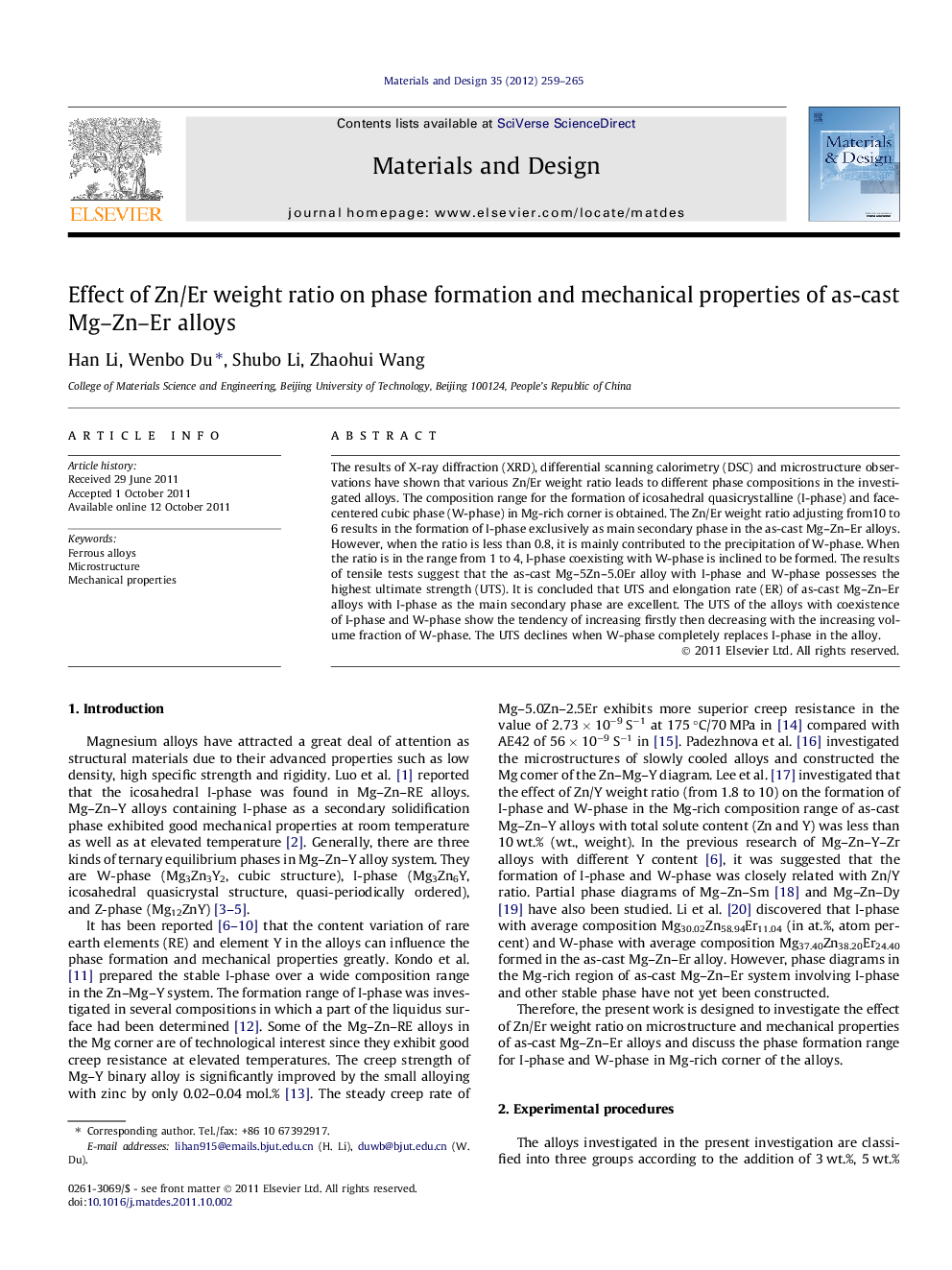| Article ID | Journal | Published Year | Pages | File Type |
|---|---|---|---|---|
| 830937 | Materials & Design (1980-2015) | 2012 | 7 Pages |
The results of X-ray diffraction (XRD), differential scanning calorimetry (DSC) and microstructure observations have shown that various Zn/Er weight ratio leads to different phase compositions in the investigated alloys. The composition range for the formation of icosahedral quasicrystalline (I-phase) and face-centered cubic phase (W-phase) in Mg-rich corner is obtained. The Zn/Er weight ratio adjusting from10 to 6 results in the formation of I-phase exclusively as main secondary phase in the as-cast Mg–Zn–Er alloys. However, when the ratio is less than 0.8, it is mainly contributed to the precipitation of W-phase. When the ratio is in the range from 1 to 4, I-phase coexisting with W-phase is inclined to be formed. The results of tensile tests suggest that the as-cast Mg–5Zn–5.0Er alloy with I-phase and W-phase possesses the highest ultimate strength (UTS). It is concluded that UTS and elongation rate (ER) of as-cast Mg–Zn–Er alloys with I-phase as the main secondary phase are excellent. The UTS of the alloys with coexistence of I-phase and W-phase show the tendency of increasing firstly then decreasing with the increasing volume fraction of W-phase. The UTS declines when W-phase completely replaces I-phase in the alloy.
► The phase compositions of as-cast Mg–Zn–Er alloys are greatly related with the Zn/Er weight ratio. ► I-phase mostly occurs within grains and W-phase distributes continuously along grain boundaries. ► I-phase has positive effect on UTS and ER of alloys. ► The existence of W-phase in alloy is detrimental to ER performance. ► We optimize the composition range for alloys enhanced by I-phase.
